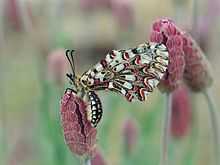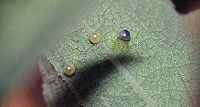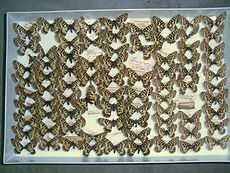Zerynthia rumina
| Zerynthia rumina | |
|---|---|
 | |
 | |
| Scientific classification | |
| Kingdom: | Animalia |
| Phylum: | Arthropoda |
| Class: | Insecta |
| Order: | Lepidoptera |
| Family: | Papilionidae |
| Genus: | Zerynthia |
| Species: | Z. rumina |
| Binomial name | |
| Zerynthia rumina (Linnaeus, 1758) | |
The Spanish Festoon, Zerynthia rumina, is a butterfly belonging to the family Papilionidae. It is a widespread species in Spain and frequents most habitats.
Distribution
North Africa, the Iberian Peninsula and southern France.
Description
Zerynthia rumina is an extremely striking species. In South east France it can be confused with the "southern festoon", Zerynthia polyxena. The two can be told apart by the presence of blue on the hindwing of the Southern festoon Z. polyxena. The Spanish festoon (Z. rumina) also has extensive red on the forewings.


Flight Period
Generally April and May with the possibility of a very small second brood in September.

Synonymy
This species represents an extreme example of oversplitting.
rumina Linnaeus (andalusica Ribbe 1910) (South Spain: Andalusia, South Huelva, Cadiz, Gibraltar, Malaga, Seville)
forms
tristis Verity
semitristis de Sagorra, 1930
xanthe Schultz, 1908 (mackeri Holland, 1910)
rubistriga Bryk
honorathii Boisduval, 1832
ochracea Staudinger, 1861
medicaste Illiger,
andalusica Ribbe, 1910
paucipunctata Neuburger
minusculus Eisner
ornatior Blachier, 1905
lusitanica Bryk, 1932 (Portugal: Lissabon, Algarve, Cintra, Belem, Oporto, Leca)
semitristis de Sagarra, 1930
paucipunctata Neuburger
ornatissima Blachier, 1908
nigricans Eisner
minusculus Eisner
aperta Eisner
divisa Schultz, 1908
canteneri Staudinger, 1861
ornatior Blachier, 1905 ( mauretanica Schultz, 1908, africana Stichel, 1907), (N Africa: Algeria, Morocco: "Tangier")
The name ornatior is not the correct one for the N African representative. canteneri (Heydenrich i.l.) Staudinger, 1861 (= canteneri Heyd. 1851, was originally applied to African populations and is the valid name, cf Felder and Felder (1864), Rothschild (1917), canteneri is generally considered a European form but the type locality was fixed 'Algeria' by the Felder brothers (l.c.) whereas Staudinger (1861) only, and apparently erroneously, referred the name to the Iberian form ochracea. Manley and Allcard (1970) following Bryk (1934) referred to canteneri Staudinger as an orange aberration of both sexes which is frequent in Morocco but occasionally appears in warmer parts of South Spain.
forms
irregularis Holland, 1912
distorta Rothschild, 1918
ornatissima Blachier, 1908
nebulosa Holland, 1912
xanthe Schultze, 1908
honorathii Boisduval, 1832
poujadei Thierry-Meg, 1910
canteneri Staudinger, 1861
nigricans Holland, 1912
minusculus Eisner
posteriorrubromarginalis Eisner
paucipunctata Neuburger
External links
-
 Media related to Zerynthia rumina at Wikimedia Commons
Media related to Zerynthia rumina at Wikimedia Commons - European Butterflies and Moths
- TOL
- Globis Gart